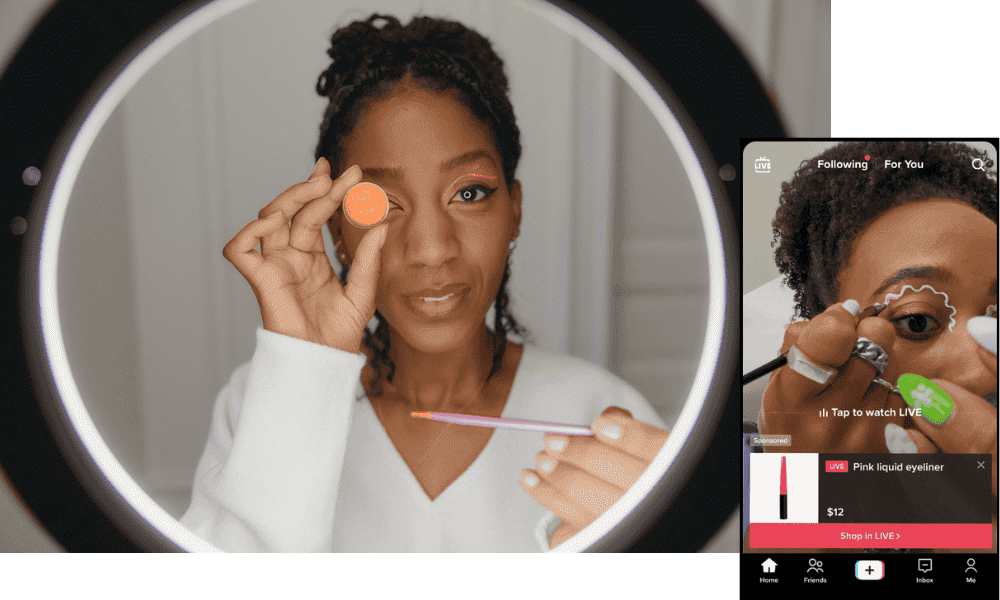The next Big Thing: Live Shopping

While most of us are throwing money at Google Ads and worrying about the latest algorithm update, there’s a $55 Billion opportunity that very few of us are paying attention to.
Livestream shopping has been quietly growing at 20% per year, and now accounts for 5% of all US ecommerce sales. This year, more than one in five digital buyers in the US (21.7%, to be exact) will make a purchase from a livestream.
For context, Walmart makes up 6% of the US ecommerce market, so if livestreaming keeps growing at the same pace, more products will be sold in 2026 via live video than all of Walmart’s online sales combined.
As with many things, the trend didn’t just appear out of nowhere – it’s a $624 billion industry in China, representing 11% of all e-commerce sales.
We’re now well past novel trend status and into major channel-shift territory.

What is Livestream Shopping?
It’s like QVC for the TikTok generation, except that the audience might feel a deep connection with the host who’s pitching the products. Brands and creators host live shows where they play games, share ideas, and review products that their audience may be interested in.
Basically every social platform has now added the ability to go live, and dedicated streaming apps have also popped up. In terms of sales volume (which is not always made public) here’s a rough breakdown of where live shopping is happening right now:
- Facebook Live
- Instagram Live
- TikTok Live
- YouTube Live
- Twitch
- Amazon Live
At its core, livestream shopping is the perfect mashup of two major focuses we’ve been talking about:
- The creator economy
- Social media as entertainment.
The fact is that the majority of us are spending more time on social media not just to connect with friends, but to be entertained. TikTok and YouTube are the new NBC and HBO, but this time the content is controlled not by the studios, but by the creators themselves.
And what’s wild is how open and shameless these creators are. Their fans are aware of the fact that they’re being sold, and that the creator has a financial interest in selling to them, but it’s almost like they’re in on the joke together. Both sides seem to be fully on board with the arrangement, which is why it works.
Why it Works
Let’s talk about three creators who have turned livestream shopping into a business model:
1. Laura Clery
Laura is a comedian with 15 million Facebook followers who, like many influencers, pivoted from entertainment to e-commerce. Her brand, Boibs, was born from a trolling incident (someone misspelled “boobs” while criticizing her breastfeeding posts). Instead of getting mad, she monetized the moment and built a brand celebrating the messiness of parenting.
But Clery isn’t just selling her own products – she’s also doing influencer campaigns, including a recent Facebook Live event for the mobile game Best Fiends. That’s the magic of livestream shopping: You don’t need to be a retailer, you just need an audience and the right brand partnerships.
2. Renaud Bauer
youtube.com/@RenaudBauerCreateur
A DIY welding YouTuber from the French Alps, Renaud turned his 72,000 subscribers into a revenue stream through his partnership with Batimat (a tools and building materials brand) that allowed him to introduce new tools in a live, interactive format.
Think about that: A niche creator with fewer than 100K subscribers is selling power tools via livestream, and it’s working. If a welding influencer in France can do it, anyone can.
3. The Birds Papaya
Sarah Nicole Landry is a blogger, content creator, and body positivity advocate who has amassed 2.5 million Instagram followers as well as a thriving podcast. When Canadian intimates brand Knix launched a new swimwear line, they didn’t just run ads, they invited real customers and the brand founder to a live shopping event.
Viewers got instant feedback, engaged with polls and gamification features, and converted on the spot. Because when an influencer you trust is walking you through a purchase in real-time, friction disappears.
The Bottom Line
Livestream shopping is growing fast enough to rival Google’s ad revenue in the next few years, but most brands are sleeping on it. This is the Wild West of e-commerce — an unsaturated, high-growth channel where first movers win big.
Think back to the early days of TikTok, Instagram, or even YouTube. The marketers who had the courage to move early and take advantage of the new space that few others were competing for were the ones that ended up with the biggest rewards.


